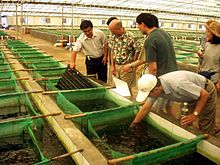Hello All,
I am new to this forum, and was trying to see if I could find answers to some questions by looking at old posts. I have a few that I cannot find answers to:
1) I have read that abalone products are CITES animals, and therefore heavily regulated, as far as importing them/exporting them from/to the US. This confuses me, as I have been to restaurants that sell abalone meals.
2) I have been approached (to invest in) by a start up company who is trying to produce abalone pearls, meat and other products from the animals they are growing. If this is actually something that can be legally done (see question 1), is there really a market for these items (pearls)?
Thank you very much for your time!
Bea
I am new to this forum, and was trying to see if I could find answers to some questions by looking at old posts. I have a few that I cannot find answers to:
1) I have read that abalone products are CITES animals, and therefore heavily regulated, as far as importing them/exporting them from/to the US. This confuses me, as I have been to restaurants that sell abalone meals.
2) I have been approached (to invest in) by a start up company who is trying to produce abalone pearls, meat and other products from the animals they are growing. If this is actually something that can be legally done (see question 1), is there really a market for these items (pearls)?
Thank you very much for your time!
Bea



